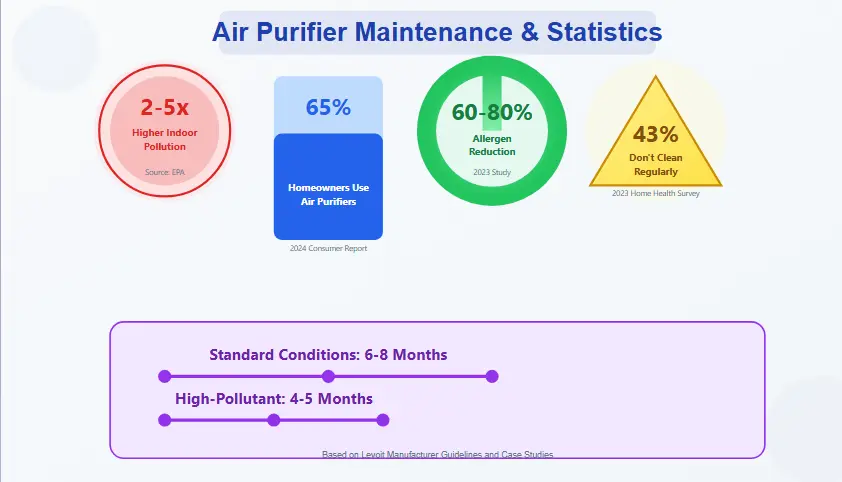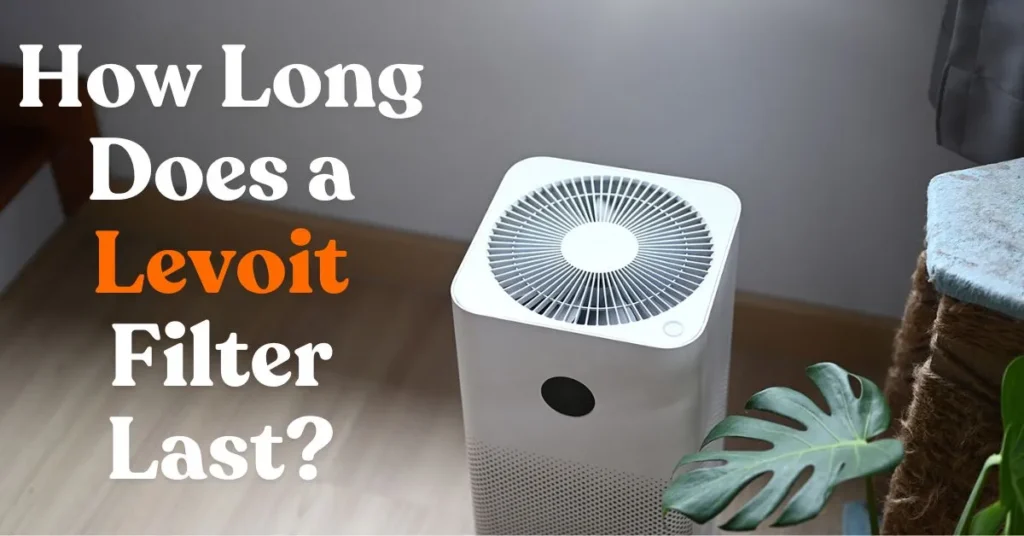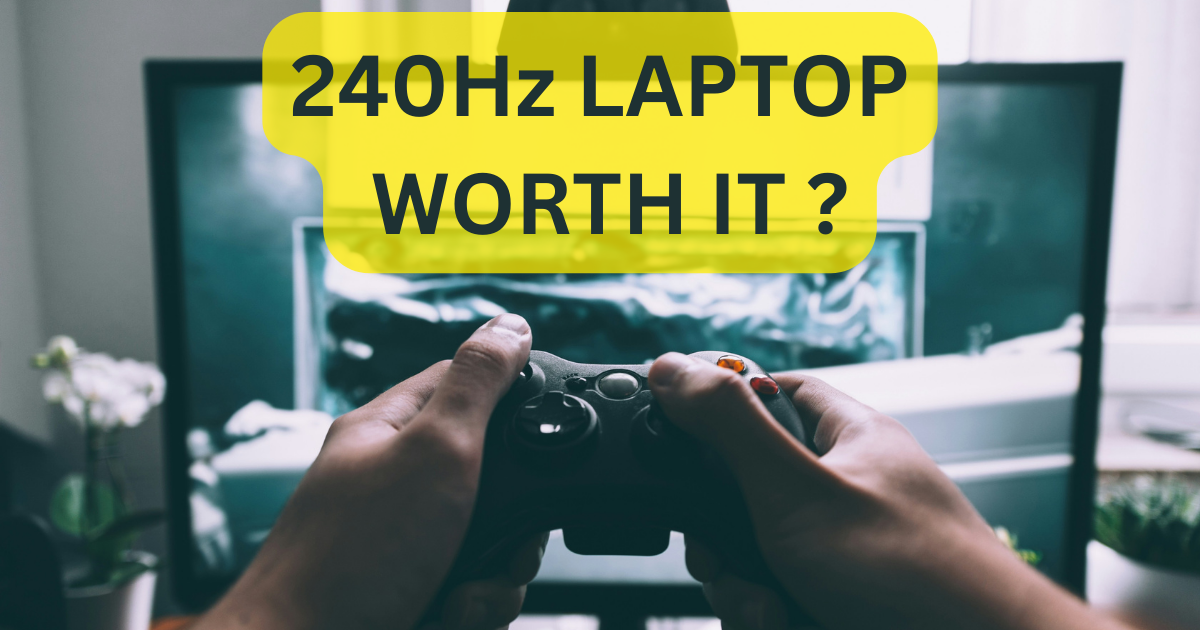Introduction
Indoor air quality has become a major concern for many households, especially as people spend more time indoors. According to the United States Environmental Protection Agency (EPA), indoor air can contain 2–5 times more pollutants than outdoor air, which can affect our health and comfort in various ways. From dust mites and pet dander to harmful gases and odors, there are many contaminants that could be circulating in your home without your knowledge.
Levoit air purifiers have emerged as a popular solution for creating cleaner indoor environments. Known for their user-friendly design and reliable filtration systems, Levoit products aim to capture common household pollutants, including allergens, odors, and smoke. But one question arises time and again: How long does Levoit filter last? In this article, we will explore the recommended filter lifespan, the science behind the filtration process, and the maintenance steps that can help you get the most out of your Levoit air purifier.
You will also find data from consumer reports and home health surveys, as well as practical examples to illustrate how different conditions can affect filter longevity. By the end, you’ll have a clear understanding of the factors that influence when and how often you should replace your Levoit filter, and how to maintain your air purifier for peak performance. Let’s dive in!

I. Understanding Levoit Air Purifiers and Their Filters
Levoit Brand Overview
Levoit is a brand recognized for creating air purifiers that are both efficient and relatively affordable. Their mission is to improve indoor air quality for everyday consumers by using advanced filtration technology. Levoit’s product line includes several models with varying room coverage capacities and features like auto mode, air quality indicators, and different fan speed settings.
Types of Filters Used in Levoit Purifiers
Levoit air purifiers typically use a three-stage filtration system that includes:
- Pre-Filter Layer (in many models):
- This layer captures larger particles such as dust, pet hair, and lint.
- By removing these bigger particles first, the primary filter layers last longer.
- True HEPA Filter:
- “HEPA” stands for High-Efficiency Particulate Air. A True HEPA filter captures up to 99.97% of airborne particles as small as 0.3 microns, including pollen, mold spores, and certain bacteria.
- This high capture rate is one of the reasons Levoit air purifiers are effective in reducing allergens in your home.
- Activated Carbon Filter:
- This layer targets odors, smoke, and Volatile Organic Compounds (VOCs).
- The activated carbon has a porous structure that can adsorb (or bind) various gases and smells, helping to keep your indoor air fresh.
Common Levoit Models
Some of the most popular Levoit models include the Core 300 and the Core 400S. Both use the three-stage filtration system but differ in their Clean Air Delivery Rate (CADR) and the coverage area they can handle. The Core 300 is suitable for smaller to medium-sized rooms, while the Core 400S is designed for larger areas. Though the fundamental technology remains the same, slight differences in design, fan power, and filter size can affect how long the filters last.
Key Data to Note:
A 2024 consumer report revealed that over 65% of homeowners consider an air purifier essential for maintaining good indoor air quality. This finding underscores the growing reliance on devices like Levoit air purifiers to combat indoor pollution.
II. How Long Does a Levoit Filter Last?

Manufacturer Recommendations
Levoit typically recommends changing the filter every 6–8 months, though this timeframe can vary based on the specific model and usage conditions. This recommended schedule is not arbitrary—it is based on average household use, normal levels of indoor pollutants, and continuous operation for a certain number of hours per day. The brand’s official documentation often includes a note about checking the filter more frequently if you live in an environment with a high level of pollutants.
Factors Affecting Filter Lifespan
While 6–8 months is a useful guideline, several factors can shorten or extend your filter’s lifespan:
- Usage Hours Per Day:
- If you run your Levoit purifier around the clock (24/7), you’ll likely need to replace the filter closer to the 6-month mark.
- If you use it only part-time, the filter could last longer, potentially up to 8 months or more.
- Indoor Air Quality:
- Homes with pets or smokers often have higher concentrations of pet dander, hair, and smoke particles.
- If you live in a city with poor outdoor air quality, your purifier will also work harder to filter pollutants that enter from outside.
- Environment and Climate:
- Humid environments can lead to faster growth of mold spores, which the filter needs to capture.
- In very dusty or industrial areas, the filter may become clogged more quickly.
Visible and Performance-Based Indicators
Rather than relying solely on the calendar, you can also look for signs that your filter may be nearing the end of its useful life:
- Odor Detection: If the purifier is no longer effective at removing odors, the activated carbon layer could be saturated.
- Dust Accumulation: If you notice an increase in dust on surfaces, it might indicate the filter is not trapping particles as effectively.
- Reduced Airflow: Weaker airflow or a whistling sound could mean the filter is clogged and needs replacing.
Key Data to Include:
A 2023 study found that properly maintained air purifiers can reduce airborne allergens by 60–80% in typical households. This statistic shows how essential regular filter replacement is in maintaining good indoor air quality.
III. Technical Insights into Filter Efficiency
True HEPA Technology
The True HEPA filter in a Levoit purifier is made from a dense, paper-like material folded into pleats to maximize surface area. As air passes through, the filter captures microscopic particles, including pollen, mold spores, dust mites, and even some bacteria. This high-density structure is why True HEPA filters are more efficient than standard or “HEPA-type” filters. However, it also means they can become clogged if not replaced on schedule, reducing their effectiveness.
Activated Carbon’s Adsorption Capacity
Activated carbon works through a process known as adsorption—the molecules of odors and gases stick to the surface of the carbon. Over time, the carbon becomes saturated, meaning it can no longer adsorb new odors or VOCs. Once the activated carbon is “full,” you may notice smells lingering in the air that the purifier previously handled with ease.
Role of Pre-Filters
In many Levoit models, there is a pre-filter layer that catches larger particles like pet fur, dust bunnies, and visible debris. This step is crucial because it prevents the True HEPA filter from getting clogged too quickly. By cleaning or replacing the pre-filter (if your model allows it) on a regular basis, you can help the main filter last closer to that 8-month mark rather than the lower end of the spectrum.
Clean Air Delivery Rate (CADR)
The CADR rating measures how quickly an air purifier can filter the air in a given space. A higher CADR typically means the unit can process more air in a shorter time, which might lead to the filter working harder and potentially needing replacement sooner. When you buy a purifier, consider whether the CADR is appropriate for the size of your room, as an overworked filter may wear out faster.
Example/Case Study (Hypothetical):
Imagine a family of four with two pets and one smoker in the household. Their purifier runs continuously to keep up with pet dander and smoke particles. Rather than lasting the full 6–8 months, the filter needs replacing every 4–5 months because the environment contains more pollutants than a pet-free or smoke-free home.
IV. Maintenance Tips to Prolong Filter Life
1. Regular Cleaning of Exterior and Pre-Filter
One of the simplest ways to extend the life of your filter is to keep the outside of the air purifier and its pre-filter clean. According to a 2023 home health survey, 43% of users do not clean or vacuum their air purifier’s exterior regularly. Dust and debris can accumulate on the intake vents, forcing the device to work harder.
- Exterior Wipe-Down: Use a soft cloth or a microfiber duster to gently remove any dust on the air intake and outlet areas.
- Pre-Filter Maintenance: Some Levoit models have a washable or vacuumable pre-filter. If your model’s manual allows it, clean the pre-filter every 2–4 weeks to catch large debris before it clogs the main filter.
2. Optimal Placement
Placing the air purifier in the right spot can significantly impact its efficiency:
- Avoid Corners and Blockages: Keep the purifier away from walls, furniture, and curtains that can block airflow.
- Central Location: Position it where air circulates well, such as a living room or hallway with an open floor plan.
3. Using Automatic Mode (If Available)
Certain Levoit models, like the Core 400S, include a smart sensor that adjusts fan speed based on the air quality it detects. By using this feature, you can optimize filter usage because the purifier will only run at higher speeds when necessary. Over time, this could help extend the filter’s lifespan.
4. Seasonal Considerations
Depending on where you live, you may have to adjust your maintenance routine by season:
- Allergy Season (Spring): Pollen counts can skyrocket, so the filter will capture more allergens, potentially reducing its life by a month or two.
- Winter Months: With windows closed, indoor air can become stale, and pollutants may accumulate faster. Pay attention to any odor or dust buildup that suggests a filter replacement is due.
V. Consequences of Not Replacing the Filter on Time
1. Reduced Air Purification Efficiency
As the filter becomes clogged, it struggles to trap new pollutants effectively. You might notice that your home feels stuffier or that your allergies flare up more often. The longer you delay a filter replacement, the less benefit you will get from the air purifier.
2. Potential Health Risks
If the air purifier is recirculating air through a dirty filter, some of the trapped particles can dislodge and return to the air. This is particularly problematic for individuals with asthma or allergies, as a worn-out filter may actually contribute to higher pollutant levels instead of reducing them.
3. Device Strain and Increased Energy Use
A dirty or clogged filter forces the air purifier’s motor to work harder, which can lead to higher electricity bills and a shorter lifespan for the device. Overworking the motor is not only inefficient but could also cause overheating or mechanical failure over time.
VI. Conclusion
Throughout this article, we’ve explored the question, “How long does Levoit filter last?” The short answer is typically 6–8 months, but many variables can shift this timeframe. The presence of pets, cigarette smoke, or simply running the purifier around the clock can shorten the filter’s life. Conversely, a clean environment and proper maintenance can help you approach or even surpass the 8-month mark.
Encouragement to Follow Manufacturer Guidelines
Levoit’s recommendations are based on extensive testing under average conditions, so using their guidelines as a baseline is wise. Regularly inspecting your filter and paying attention to performance cues—like weaker airflow or persistent odors—can help you identify when it’s time to replace it.
VII. FAQ Section
Below are common questions about Levoit filters and air purifier maintenance.
Q1: How do I know when my Levoit filter needs replacing?
You will typically see signs such as reduced airflow, a noticeable increase in dust around your home, or persistent odors that the purifier used to eliminate. Some Levoit models also come with an indicator light that reminds you when it’s time to change the filter. If you notice these signals, it’s wise to replace the filter rather than wait until the recommended timeframe.
Q2: Can I wash or clean a Levoit HEPA filter to extend its life?
Most Levoit HEPA filters are not washable because water and cleaning solutions can damage the delicate fibers. Once a HEPA filter is clogged or saturated, it needs to be replaced to maintain efficiency. However, some models have a washable pre-filter that you can clean regularly to prolong the life of the main filter.
Q3: Do different Levoit models have different filter lifespans?
Yes, slight differences in design, filter size, and airflow capacity can affect how long a filter lasts. Nonetheless, 6–8 months is a fairly standard recommendation across most Levoit models. If you’re unsure, always check the user manual for model-specific guidelines.
Q4: What happens if I keep using an old filter?
Using an old or clogged filter can lead to reduced performance, meaning you won’t be getting the same level of air purification. In fact, a heavily clogged filter can recirculate trapped particles back into the air and strain the purifier’s motor, which can increase energy consumption and shorten the purifier’s overall lifespan.
Q5: Are aftermarket filters just as effective as original Levoit filters?
While some third-party filters may fit and seem cost-effective, there is no guarantee they meet the same quality standards as official Levoit replacements. Poorly made filters might have lower-grade HEPA material or insufficient activated carbon, reducing the air purifier’s effectiveness. For consistent performance and to maintain your device’s warranty, it’s generally best to use official Levoit replacement filters.
Additional Resources
If you want to learn more about improving indoor air quality and the importance of regular filter replacements, consider visiting these well-known websites:
- EPA’s Indoor Air Quality Information – United States Environmental Protection Agency (EPA)
- Home Improvement and Air Purifier Maintenance Tips – The Spruce
- Allergy and Asthma Insights – American College of Allergy, Asthma & Immunology (ACAAI)
These resources provide a wealth of information on indoor air pollution, filter technologies, and ways to maintain a healthier home environment.
Final Thoughts
In summary, the lifespan of a Levoit filter depends on usage patterns, indoor air quality, and adherence to proper maintenance. By following the 6–8 month replacement guideline and paying attention to real-world indicators—like odors, dust buildup, and airflow—you can ensure that your Levoit air purifier operates efficiently. Remember to clean or replace the pre-filter as needed, keep the unit in a well-ventilated area, and consider using smart features like automatic mode to optimize filter use. A well-maintained air purifier not only contributes to a fresher home environment but also supports better health for everyone in your household.
Discover more from Techknr
Subscribe to get the latest posts sent to your email.

